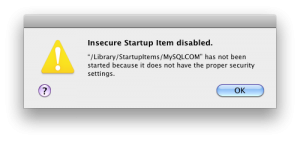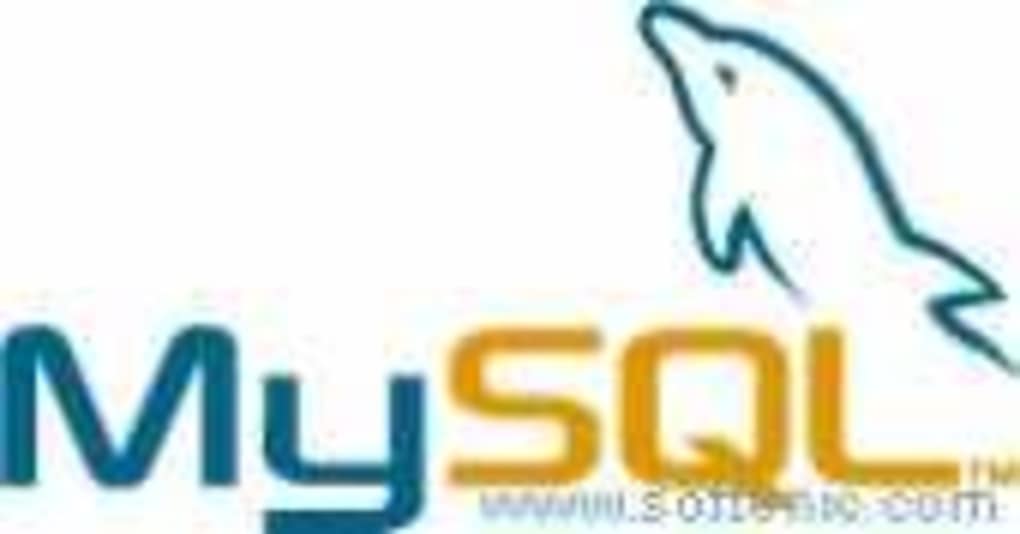

The above files are hosted on External site, There is no way to related with this site. PS: Above post may contain the copyrighted software downloads.
#Mysql for mac os x 10.7 install#
In password area above don’t fill anything just put mouse cursor in password area and hit ENTER NO PASSWORD NEEDED!! and If u wants to install applications and OS X asks for administration password just leave it blank and hit OK button Click Power on this virtual machine and start OS X Lion, Keys are required to power on the VM.Ĩ. Click and open OS X Lion.vmx now VMware will add the it as virtual OSħ. Choose from menu the option: Open Existing VMĦ. Visit the Download MySQL Community Server section of the Oracle web site and download mysql-5.6., which is the 64-bit version of MySQL 5.6. Put the OS X Lion VMware folder (its 9 GB) in any place u want where you have the most spaceĥ. Install VMware Workstation (Version 6 & Above)ģ. For earlier versions of Mac OS X, including Mac OS X Mavericks 10.9, Mac OS X Mountain Lion 10.8, Mac OS X Lion 10.7, Mac OS X Snow Leopard 10.6, Mac OS X Leopard 10.5, Mac OS X Tiger 10.4, and before, the process to obtain those installers differs a bit. In OS X Lion VMware Pre Installed folder. Download OS X Lion Pre Installed and unrar it using WinRARĢ. Mac OS X 10. it is not exactly installation,This has been Pre installed by Mahmood, that is why there is no install of Mac and why it is so easy!ġ. Run the Script and Look for the Recommendations mysqltuner.This video about the installation of Mac OS X on VMware.

Then download and run script: sudo -s cd /usr/bin/ sudo curl -O sudo chmod 755 To make recommended adjustments let the database run for over 24 hrs before running the script. Make your adjustments to it and restart MySQL sudo /usr/local/mysql/support-files/rver restart Run the mysql tuner script If you have MySQL 5.6.X ,the default my.cnf is found at: /usr/local/mysql/my.cnfĬopy that to /etc sudo cp /usr/local/mysql/my.cnf /etc/my.cnf Named my-small.cnf my-medium.cnf my-large.cnfand my-huge.cnf files – if you want your own my.cnf for mysql file that you need to edit, pick the one that suits your environment and make a copy of it into /etc sudo cp /usr/local/mysql/support-files/my-small.cnf /etc/my.cnf Some sample my.cnf configuration files for MySQL 5.5.X are found at : /usr/local/mysql/support-files/
#Mysql for mac os x 10.7 64 Bit#
Oracle and only support Java 7 and later, and only on 64 bit systems. For issues related to Apple Java 6 on Mac, contact Apple Support.
#Mysql for mac os x 10.7 update#
The actual MySQL data is stored at: /usr/local/mysql/data For Mac OS X 10.6 and below, use the Software Update feature (available on the Apple menu) to check that you have the most up-to-date version of Java 6 for your Mac. This is the default behaviour as a part of the OS X installation and MySQL runs Ok without it. To change some variables to the database server you have to edit configuration file ‘my.cnf’ which you will notice that there isn’t one filed in the root directory /etc. You can see what tweaks you might need to make with a fine tuning MySQL script aptly named, this script can make suggestions that you need to load into your MySQL configuration file. UPDATE : Be sure to check out our post on MySQL installation for OS X 10.9 Mavericks Last year when OS X 10.7 Lion was released we found ourselves with a version of OS X Server without MySQL and basic web hosting capabilities. Once you have installed MySQL onto OS X / OS X server, MySQL will basically run OK under a light load.


 0 kommentar(er)
0 kommentar(er)
